On a scorching day, the refreshing blast of your car’s air conditioner feels like a small miracle. Yet, that comfort often comes with an unwelcome side effect: increased fuel consumption. While beating the heat is essential for a pleasant drive, finding ways to keep your car cool without draining your tank is equally important. In this article, we explore practical tips and clever strategies to save fuel while using your car’s AC, helping you strike the perfect balance between comfort and efficiency on the road.
Table of Contents
- Understanding the Impact of Car AC on Fuel Efficiency
- Optimizing Temperature Settings for Maximum Fuel Savings
- Utilizing Recirculation Mode to Reduce Energy Consumption
- Balancing Fan Speed and Airflow for Efficient Cooling
- Alternating Between AC and Ventilation for Fuel Conscious Driving
- Regular Maintenance Tips to Keep Your AC Fuel-Efficient
- Q&A
- To Conclude
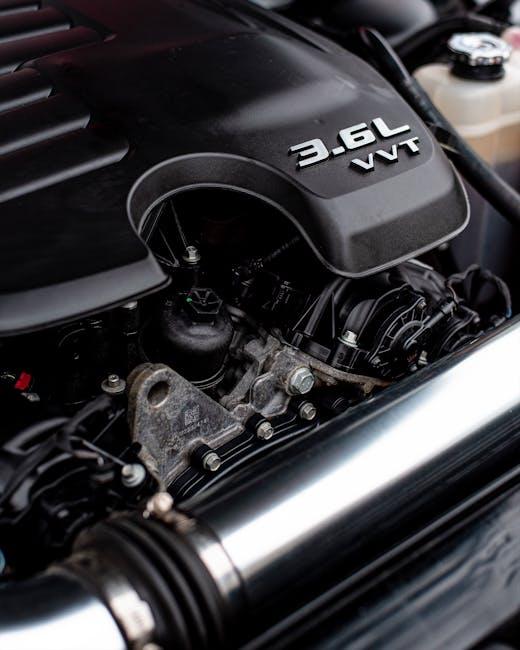
Understanding the Impact of Car AC on Fuel Efficiency
Operating your car’s air conditioning system increases fuel consumption because it places an additional load on the engine. The compressor, which is responsible for cooling the air, requires power generated by burning fuel, thereby affecting overall efficiency. On highways, the impact might be less noticeable due to consistent engine speeds, but in stop-and-go urban traffic, running the AC can reduce fuel economy by up to 20%. Understanding these dynamics can help you make smarter choices about when and how to use your AC to balance comfort and efficiency.
Optimizing your AC use doesn’t mean you have to sweat through your drives. Consider these practical tips:
- Use recirculation mode to cool the interior faster and reduce engine strain.
- Pre-cool your car by ventilating it open before turning the AC on.
- Maintain your AC system with regular servicing to ensure it runs smoothly with minimal energy waste.
Below is a quick comparison showing typical fuel efficiency drops based on driving conditions:
| Driving Scenario | Fuel Efficiency Reduction |
|---|---|
| Highway Driving (60+ mph) | 5%-10% |
| City Driving (Stop-and-Go) | 15%-20% |
| Idling in Traffic | Up to 25% |
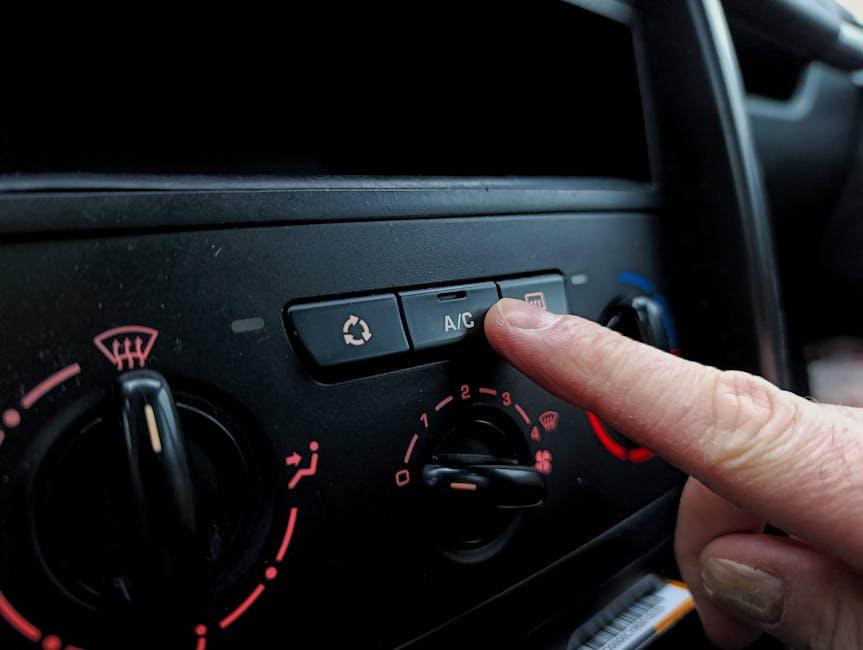
Optimizing Temperature Settings for Maximum Fuel Savings
Setting your car’s temperature wisely can significantly reduce the strain on your engine and maximize fuel efficiency. Aim to keep the air conditioner at a moderate temperature—*around 75°F to 78°F (24°C to 26°C)* is ideal. Avoid the temptation to blast the AC to its coldest setting immediately, as the compressor works harder, consuming more fuel. Instead, gradually lower the temperature once the cabin has started to cool naturally. This approach not only saves fuel but also maintains driver comfort without unnecessary energy expenditure.
Simple tips for smart temperature control:
- Use the “recirculate” mode to cool the air inside the cabin faster and reduce compressor load.
- Park in shaded areas to prevent the car from overheating, cutting down on initial AC usage.
- Turn off the AC when driving at lower speeds or in stop-and-go traffic, switching to open windows if necessary.
| Temperature Setting | Fuel Efficiency Impact |
|---|---|
| 68°F (20°C) | High fuel consumption |
| 75°F (24°C) | Moderate fuel consumption |
| 78°F (26°C) | Optimal fuel savings |
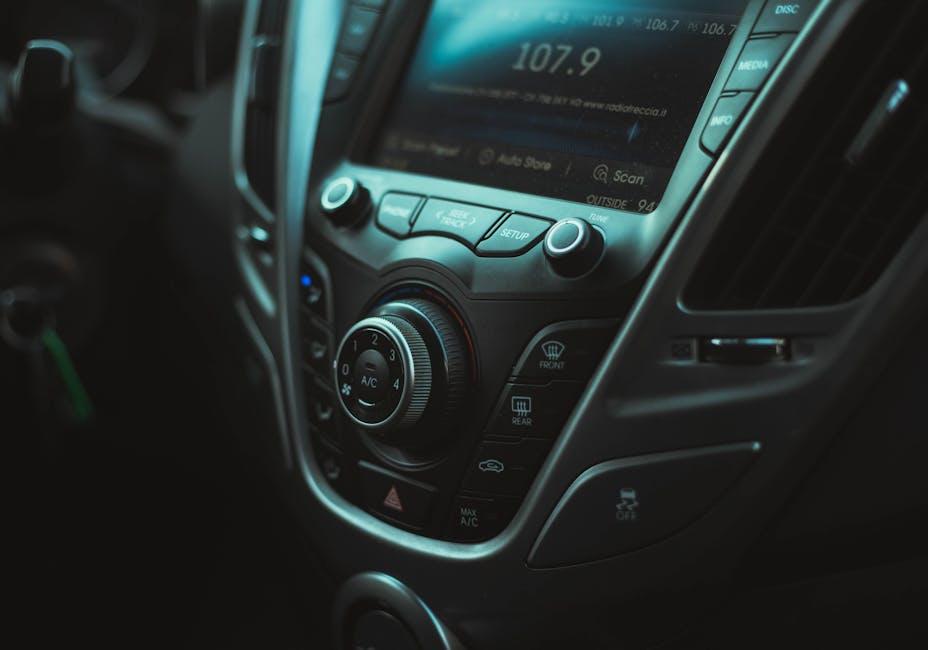
Utilizing Recirculation Mode to Reduce Energy Consumption
Switching to recirculation mode in your car’s air conditioning system is an effective strategy to minimize fuel consumption. By reusing the cooler air already inside the cabin instead of constantly pulling in hot air from outside, the AC system doesn’t work as hard. This reduces the compressor’s workload, which directly translates to lower fuel usage. Ideal for driving in urban traffic or in areas with high temperatures, this mode keeps the interior comfortable while conserving energy.
To maximize the benefits of recirculation mode, consider these simple tips:
- Activate recirculation quickly: Turn it on as soon as your car starts, especially on hot days, to cool down the cabin faster.
- Limit use in stop-and-go traffic: Prolonged use can cause the air to become stale; switch back to fresh air mode periodically.
- Combine with window insulation: Using sunshades and window tints helps maintain cooler temperatures, boosting AC efficiency.
| Mode | Fuel Impact | Optimal Use |
|---|---|---|
| Fresh Air | Higher fuel consumption | Better for prolonged highway driving |
| Recirculation | Lower fuel consumption | Ideal for city traffic and hot weather |
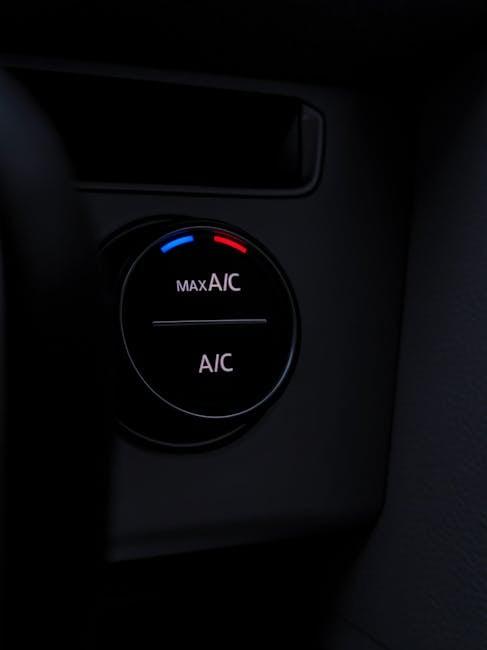
Balancing Fan Speed and Airflow for Efficient Cooling
When it comes to maintaining a comfortable temperature without guzzling fuel, the secret lies in perfectly tuning your car’s fan speed and airflow. Instead of blasting the AC fan at maximum power right from the start, consider a gradual approach. Begin with a moderate fan speed that cools the cabin efficiently without overburdening the system. By avoiding the maximum fan setting, your vehicle’s engine won’t work as hard, which directly benefits your fuel economy. Equally important is directing airflow strategically — focusing vents towards passengers rather than the entire cabin can reduce the cooling demand.
To get the most out of your AC while minimizing fuel consumption, keep these practical tips in mind:
- Optimize vent placement by adjusting air vents towards occupants instead of open windows.
- Use recirculation mode to cool already conditioned air inside the car rather than pulling in hot outside air.
- Balance fan speed and temperature setting to avoid excessive load on the compressor and engine.
| Fan Speed | Impact on Fuel Use | Cooling Efficiency |
|---|---|---|
| Low | Minimal fuel impact | Slower but steady |
| Medium | Moderate fuel impact | Balanced cooling |
| High | High fuel impact | Fast cooling, less efficient |
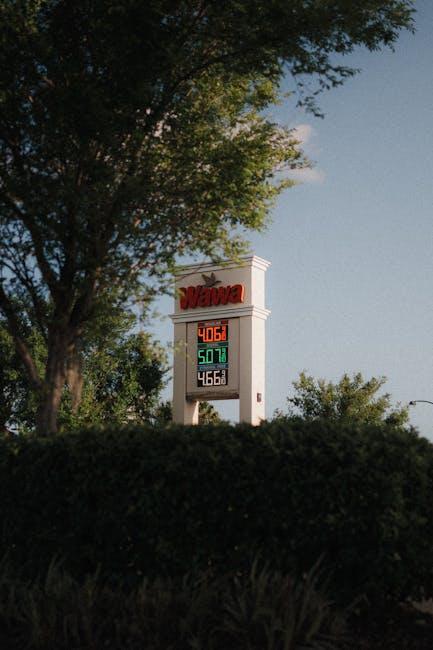
Alternating Between AC and Ventilation for Fuel Conscious Driving
When driving, constantly running the air conditioning can drain your fuel efficiency faster than expected. To strike a balance, try alternating between the AC and ventilation modes. Using the fresh air ventilation lets cooler outside air circulate inside the cabin without taxing your engine as much. This method not only saves fuel but also maintains a comfortable environment, especially during mild weather conditions. Remember, switching between modes every 10 to 15 minutes can maximize fuel savings while keeping the car fresh and cool.
Try these simple strategies for smart AC use:
- Start your drive with ventilation to quickly exchange warm air inside.
- Switch to AC only when outside temperatures rise significantly.
- Use the recirculation mode for intense heat bursts, but revert to fresh air soon after.
- Turn off AC a few minutes before reaching your destination to save fuel without sacrificing comfort.
| Mode | Fuel Impact | Best Use |
|---|---|---|
| AC On | Higher | Hot, humid days |
| Ventilation | Lower | Mild, breezy weather |
| Recirculation | Moderate | Peak heat intervals |
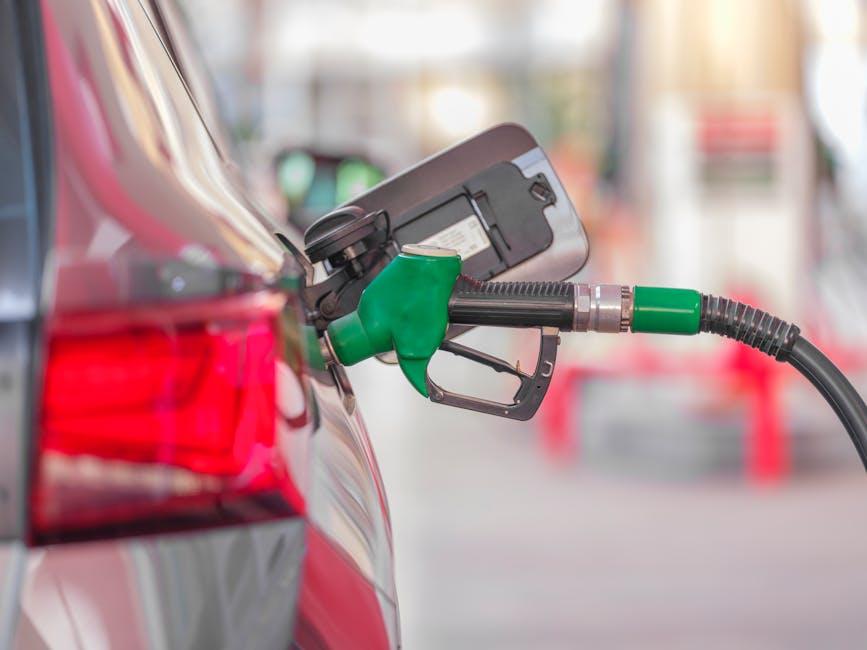
Regular Maintenance Tips to Keep Your AC Fuel-Efficient
Keeping your car’s air conditioning system in peak condition is essential for reducing fuel consumption. Regularly inspect and replace the AC filter to ensure optimal airflow, which prevents the system from overworking and drawing excessive power. Don’t forget to check the refrigerant levels; low refrigerant forces the compressor to run harder, leading to increased fuel usage. Additionally, clean the condenser coils to maximize heat exchange efficiency, allowing the system to cool the cabin faster and more economically.
Routine maintenance doesn’t have to be complicated. Here’s a simple checklist to keep your AC fuel-friendly:
- Replace cabin air filters every 12,000 to 15,000 miles
- Inspect refrigerant fluids for leaks or inadequacies
- Clean condenser fins with gentle water sprays
- Schedule annual professional AC tune-ups to detect hidden issues
| Maintenance Task | Frequency | Fuel Impact |
|---|---|---|
| Cabin Air Filter Replacement | Every 12,000-15,000 miles | Moderate |
| Refrigerant Check | Annually or when AC weakens | High |
| Condenser Cleaning | Every 6 months | Moderate |
| Professional AC Service | Once a year | High |
Q&A
Q&A: How to Save Fuel While Using Car AC
Q1: Does running the car AC really affect fuel consumption?
A1: Yes, using your car’s air conditioning system does increase fuel consumption because the AC compressor is powered by the engine. This extra load means the engine has to work harder, burning more fuel. However, the impact varies based on factors like driving conditions and ambient temperature.
Q2: What’s the most fuel-efficient way to use AC in the car?
A2: To save fuel, start by using the AC sparingly. On cooler days, try rolling down the windows at lower speeds to let fresh air in. When it’s hot, use the AC at a moderate setting instead of max cooling. Also, use the recirculation mode—it cools the cabin faster by reusing interior air, reducing compressor workload.
Q3: Should I keep windows open or close when running the AC?
A3: At low speeds, like city driving, open windows can reduce AC efficiency and increase drag, both raising fuel use. At higher speeds, however, open windows create aerodynamic drag, which also hurts fuel economy. The best approach is to close windows and run the AC on a moderate setting while driving on highways.
Q4: How does regular car maintenance help with fuel-efficient AC use?
A4: Keeping your AC system well-maintained ensures it runs smoothly and efficiently. Clean air filters, properly charged refrigerant, and functioning components prevent the compressor from working harder than necessary, saving both fuel and wear on the engine.
Q5: Are there alternative cooling tips that help save fuel?
A5: Yes! Park in the shade to keep your car cooler before you start. Use sunshades on windows to reduce heat buildup inside the car. Ventilate your car by opening windows briefly before turning the AC on. These small steps let you set the AC at lower, more fuel-friendly levels.
Q6: Is it better to turn the AC on immediately or after driving a bit?
A6: It’s often better to ventilate your car first by opening windows for a minute or two to let hot air out. Then close the windows and switch on the AC. This prevents the AC from struggling to cool down an overheated cabin, which can save fuel in the long run.
Q7: Does using the AC in stop-and-go traffic use more fuel?
A7: Yes, in heavy traffic, the AC compressor cycles more frequently, increasing fuel consumption. When idling for extended periods, consider turning the AC off or setting it to a lower level if it’s safe to do so, to conserve fuel.
Q8: Can I rely on my car’s “eco” or “economy” AC mode to reduce fuel use?
A8: Many modern cars offer eco AC modes designed to balance comfort and fuel efficiency. These modes often limit compressor usage or fan speeds, which can slightly reduce fuel consumption. Using them can help save fuel while keeping you reasonably cool.
By understanding how your car’s AC system interacts with fuel use, you can stay comfortable while driving without draining your gas tank unnecessarily. A few thoughtful habits and smart choices make all the difference on your fuel bill!
To Conclude
Mastering the art of saving fuel while keeping your car’s AC on doesn’t just protect your wallet—it also benefits the environment and enhances your driving comfort. By applying simple strategies like using the recirculate mode, parking in the shade, or adjusting your speed, you strike a balance between cool air and efficient fuel use. Remember, a smart approach to air conditioning is not about turning it off completely but about using it thoughtfully. So next time you hit the road on a sunny day, let these tips be your guide to a cooler ride and a fuller tank. Drive smart, stay cool, and save fuel—because every drop counts.

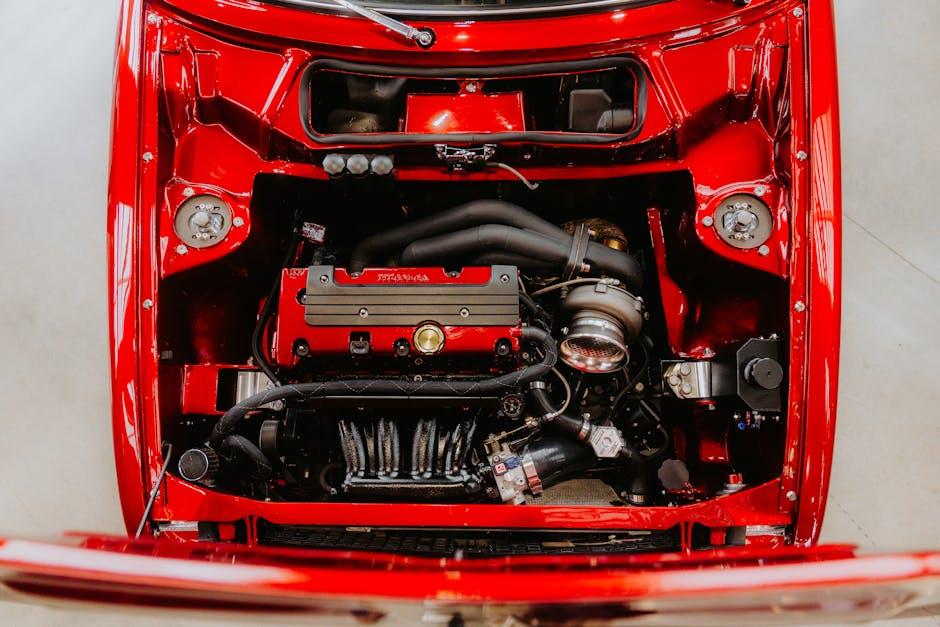
36 Comments
https://shorturl.fm/jjewt
https://shorturl.fm/CsSUj
https://shorturl.fm/k5UHg
https://shorturl.fm/o0RKG
https://shorturl.fm/cRMPh
https://shorturl.fm/w55lM
https://shorturl.fm/QLG9X
https://shorturl.fm/tGqZ9
https://shorturl.fm/2PD9Q
https://shorturl.fm/49LC1
https://shorturl.fm/nSgyr
https://shorturl.fm/kUW0u
https://shorturl.fm/CeNxK
6j1uyo
https://shorturl.fm/8iJcV
https://shorturl.fm/jiRW3
https://shorturl.fm/qXlqM
https://shorturl.fm/bWIJa
https://shorturl.fm/APq9O
https://shorturl.fm/wqZns
https://shorturl.fm/WsD7l
https://shorturl.fm/EFz9Y
https://shorturl.fm/9jQ5m
https://shorturl.fm/E930d
https://shorturl.fm/7Lptq
https://shorturl.fm/FA7zg
https://shorturl.fm/MH1yh
https://shorturl.fm/bnkRM
https://shorturl.fm/eyKHN
https://shorturl.fm/gZXeo
3ximjc
https://shorturl.fm/OoSTH
bxpok9
https://shorturl.fm/KCUeL
https://shorturl.fm/IkyLN
https://shorturl.fm/elr8I